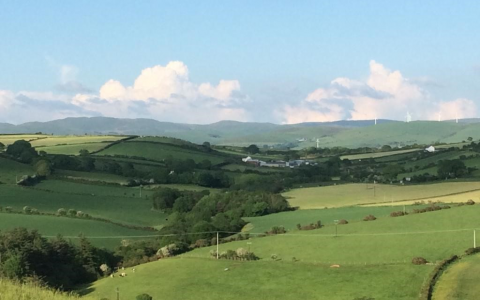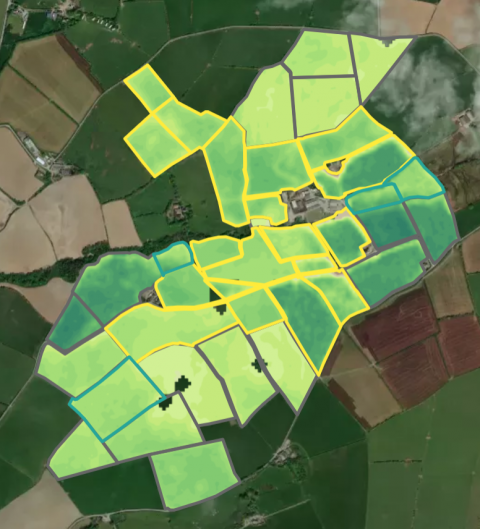Ffosygravel Project Introduction: Comparing systems of measuring grassland production
Site: Ffosygravel
Technical Officer: Gwenan Evans
Project Title: Comparing systems of measuring grassland production
Introduction to project
Grazed grass is the cheapest and most efficient form of feed on the farm. If you manage it well:
- Production and utilisation of grass can be increased significantly
- Supplementary feed inputs can be decreased
- Production costs can be reduced
- Profit margins will increase.
The ‘go to device’ for measuring grassland production in a grazing system is to use a plate meter which measures the quantity of grass available in every rotationally grazed paddock at a given time. This approach results in useful and well proven management data, but is time consuming and labour intensive, with measurements by walking the grazing platform with a plate meter requiring at least half a day on a weekly basis.
Advances in earth observations such as satellite imagery data has the potential to easily present grass growth data and is now more commonly accessible. This project will assess ground-truth data from satellite imagery on regularly predicting grass quantities available in every paddock that are at different stages of growth.
Ffosygravel farm near Borth in North Ceredigion faces challenging topography with a significant amount of the grazing platform being on sloping and free draining land. Although grazed grass has always played a role in the management at Ffosygravel, a plate meter is used to measure grass available before turnout, with the aim to start grazing around 24 March. Mr Griffiths would like to further challenge the grazing platform and its utilisation by optimising its potential quality. This project will in addition provide a sound basis for applying the tried and tested principles for creating and managing a grazing platform, providing potential to improve assessment and interpretation and therefore increase utilisation of the grass available.
The grazing platform will be set up by dividing fields into suitable sized paddocks and grass production will be measured and recorded weekly throughout the grazing season with both plate meter and satellite imagery. Data will be obtained and compared between both readings in the measure of grass dry matter available in tonnes per hectare (tDM/ha) for every paddock.
Figure 1. Ffosygravel farm
Aim of project
The focus of this project is to compare the accuracy of two grass measuring systems; plate meter and satellite imagery. A cut and weigh method will also be used monthly to ensure accuracy. We will be subdividing the fields and mapping out the infrastructure for water accessibility and paddock access for easily accessible grazing management at Ffosygravel.
Correct allocation of grazing paddocks will allow Mr Griffiths to offer optimum three-leaf stage grass with good levels of metabolisable energy (ME) and digestibility (D value), whilst also leaving a residual for quality regrowth in the following rotation. Having the correct balance of feed is more difficult in grass than feeding TMR (total mixed ration) and, therefore, the accuracy of grass measurements is key for utilisation.
Grass will be measured by satellite imagery, plate meter and cut and weigh to compare accuracy. This will allow us to assess the ability of satellite imagery to increase grass production and grass quality (tDM) at Ffosygravel.
Early turnout and spring grazing management is underestimated, and therefore autumn closing management and closing cover are both vital for adequate spring grass wedge. If we are to achieve 10 grazing rotations in the year, the first rotation needs to be finished by early April and two and a half grazing rotation by early May.
By improving grazing management decision making, we aim to achieve at least one more rotation with increased grass utilisation, whilst also ensuring that the last round of grazing allows for a spring wedge for the next turnout in 2022 and a possible earlier turnout.
Figure 2. Satellite imagery of Ffosygravel. Yellow boundary marks the grazing paddocks.
Key Performance Indicators (KPIs):
- Increase grazing rotations from 8 to 10
- Increase tDM/ha grown from 12.8tDM/ha to 13.5tDM/ha
- 10% accuracy correlation between measurement data


